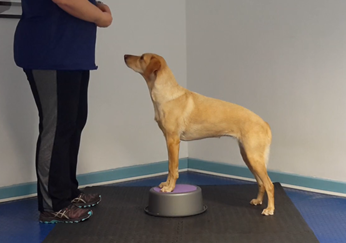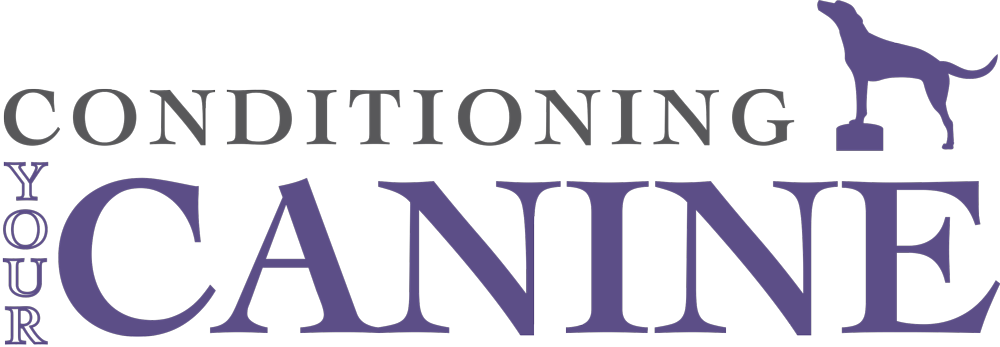Part of our “Spotlight On” series – a look at individual exercises available on the CYC platform; their benefits, and how they can help your patients in their rehab programme.
The “Pivot” exercise pyramid starts at a basic level (ex 3.1), with the dog being trained to stand with their front paws on a round bowl (such as a washing up bowl, ensuring the surface is non-slip – we stick yoga matting over the top of the bowl for a nice surface). They are encouraged to hold this position in ‘good form’ and await the next cue from their owner. Once the dog is comfortable with this position, we can move onto the pivoting action, where the dog is encouraged to take slow and controlled side-steps with the hindlimbs around the bowl, whilst keeping the front paws in position on the bowl.
The benefits of this exercise are multiple. It is hugely stimulating for the conscious proprioceptive system as the dog has to organise his or her movement in a static position (holding ‘good form’ with the front paws on the bowl) and dynamic position – stepping sideways with the hindlimbs in a controlled manner when cued by the owner. It also activates the proprioceptive receptors in the joints as it asks for active range of motion of the hindlimb.
Due to the raised position of the forelimbs, the hindlimb musculature is eccentrically loaded, which can help re-train a previously established flexor pattern, for example after a period of hindlimb lameness.
In asking the dog to side-step, the lateral and medial proximal thigh muscle groups are recruited which are two groups that can be heavily impacted by hindlimb joint pathology such as a cruciate ligament injury. Encouraging these muscles to engage correctly can help with hindlimb joint stability and support, when the dog is performing his or her everyday activities. The exercise also involves the core musculature, deep spinal stabilisers and activates the psoas group.
Although this exercise may appear simple, due to the level of proprioceptive system engagement required, the eccentric loading pattern on the hindlimb and the activation of the lateral and medial proximal thigh musculature, it is quite demanding on the dog. We would recommend this exercise is not prescribed to any dog with an active hindlimb lameness but is used for strengthening and improving more advanced movement patterns, for example in the final stages of a rehab programme, or for training the athlete.
If this exercise sounds like something you would like your patients to be able to achieve, the CYC platform will assist your clients in training this, and over 80 other exercises, safely and effectively.

